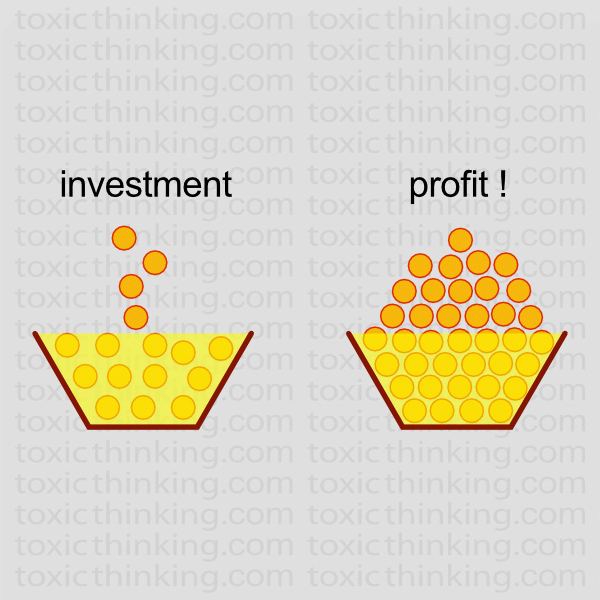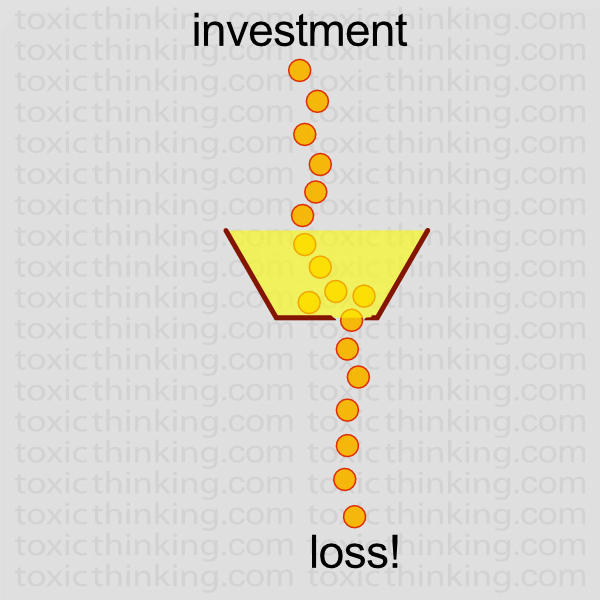Imagine that a person has invested money, time and effort into a business. One would presume that at some point, that person would expect some “profit” in return for this investment.

However, now imagine that the business is, unfortunately, losing money. In this situation, one would think that the person’s mind would tell him or her to stop investing further in that loss-making business. However, in reality, the person’s mind will most likely tell the person the opposite and make the person pour more and more money into the loss-making business. This is because the person’s mind can be reluctant to accept that the investments made so far have been a waste. Instead, the person’s mind can make the person invest even more time, money and effort into the loss-making business, hoping to recover what was lost. Psychologists have named this way of thinking, where one’s mind is reluctant to stop supporting loss-making investments, “sunk cost fallacy”.

The short examples below will help you to understand “sunk cost fallacy” thinking.
Example 1
Joe started a coffee shop next to a big office building. He hoped that lots of people from the office building would buy coffee from him. He invested a lot of money and effort into the coffee shop. Despite Joe working hard for over a year, his coffee shop had only a few customers as most preferred to have coffee from a coffee machine in the office building. As a result, Joe’s coffee shop continuously lost money.
Joe’s friends repeatedly advised him to abandon the coffee shop business, but Joe would refuse, saying, “I have put a lot of my money and effort into it for over a year. If I give it up, all this money and effort would be wasted”. Joe kept on, till he had to declare bankruptcy three years later.
Example 2
This example will show you how the sunk cost fallacy thinking can happen for “non-business” things as well.
Emily, joined a medical university to become a doctor. However, during the very first year, she realised that the medical field was not for her. She did not find any of the medical subjects easy to understand and struggled to find them interesting. Nevertheless, she, with great difficulty, managed to survive the first year.
In her second year of medical university, Emily continued to find the field of medicine uninteresting and she was therefore finding it very stressful. At this point, Emily thought of leaving the medical university and changing her field of study. She met up with her close friends to discuss this big decision. Her friends however were completely against her leaving the medical university, and they told her, “What a waste it would be if you leave now! You have already spent one year in medical university and that would all be wasted if you left now !” With this persuasion from her friends, Emily continued to study at the medical university. Year after year, Emily kept finding her time at medical university to be stressful and uninteresting, yet her well-meaning friends persuaded her to continue.
Many years later, Emily finally became a doctor and started working in a hospital. However, soon after, she was very unhappy with her job as she found medical matters uninteresting and stressful. After a while, she couldn’t take it anymore and she finally left the medical profession.
As you have seen in the above examples, it sometimes makes sense for one to let go of what one has already invested in. However, I am not saying that one should give up things just because they are challenging. There can be occasions in a business (or something else) where it is worth tolerating losses because that business is likely to improve in the future and eventually give one a good profit. What I am saying is that one should be realistic about one’s investments and that just because one has invested in something, that decision does not automatically mean that it is a good investment. If the investment is bad, one should resist one’s reluctance to let go. One should drop that investment and move on!
Do not let “sunk” cost fallacy thinking “sink” you!